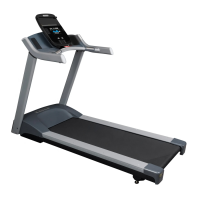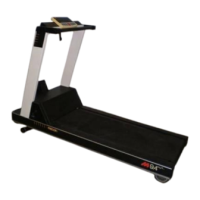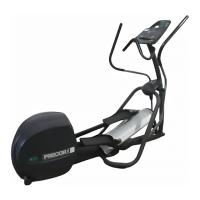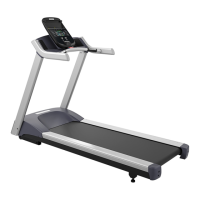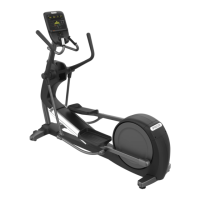page13.
o
If NO, continue Troubleshooting
CAUTION: The treadmill requires a 20-amp individual branch circuit grounded per
NEC (National Electric Code) guidelines or local region electric code.
l Measure the AC input voltage with the treadmill running and no exerciser on the belt
"unloaded." Then repeat the voltage measurement "loaded", an exerciser on the blelt
during the measurement. The difference between the two measurements should be no
more than approximately 6 volts RMS and ideally less:
o
If the voltage variance is more than 6 volts RMS, the distance from the outlet to
the power distribution panel circuit breaker may be to long or the wire gauge dia-
meter may be smaller than required. Request the facility to have an electrician ver-
ity the circuit wiring from the outlet to the power distribution panel.
o
If NO, continue Troubleshooting.
l Overloading is the most frequent cause of a tripped treadmill ciruit breaker. Overloading
is most often caused by worn belt/deck excess friction. The circuit breaker tripping point
can also be increased by poor input line voltage. Overloading most often occurs with
heavier exercisers running at high speeds, but never when lighter exercisers are walk-
ing. Verify the deck and belt wear, replace as needed. The treadmill tripped circuit
breaker event is often accompanied by "Drive Motor Current Overloading" error codes
27, 28, or 29, see “Error Code Troubleshooting Guide” .
If the treadmill ON/OFF circuit breaker is tripped:
Contact Precor Customer Support at support@precor.com or 800.786.8404 with
any questions.
Page 183
7 Troubleshooting
System Troubleshooting Procedures

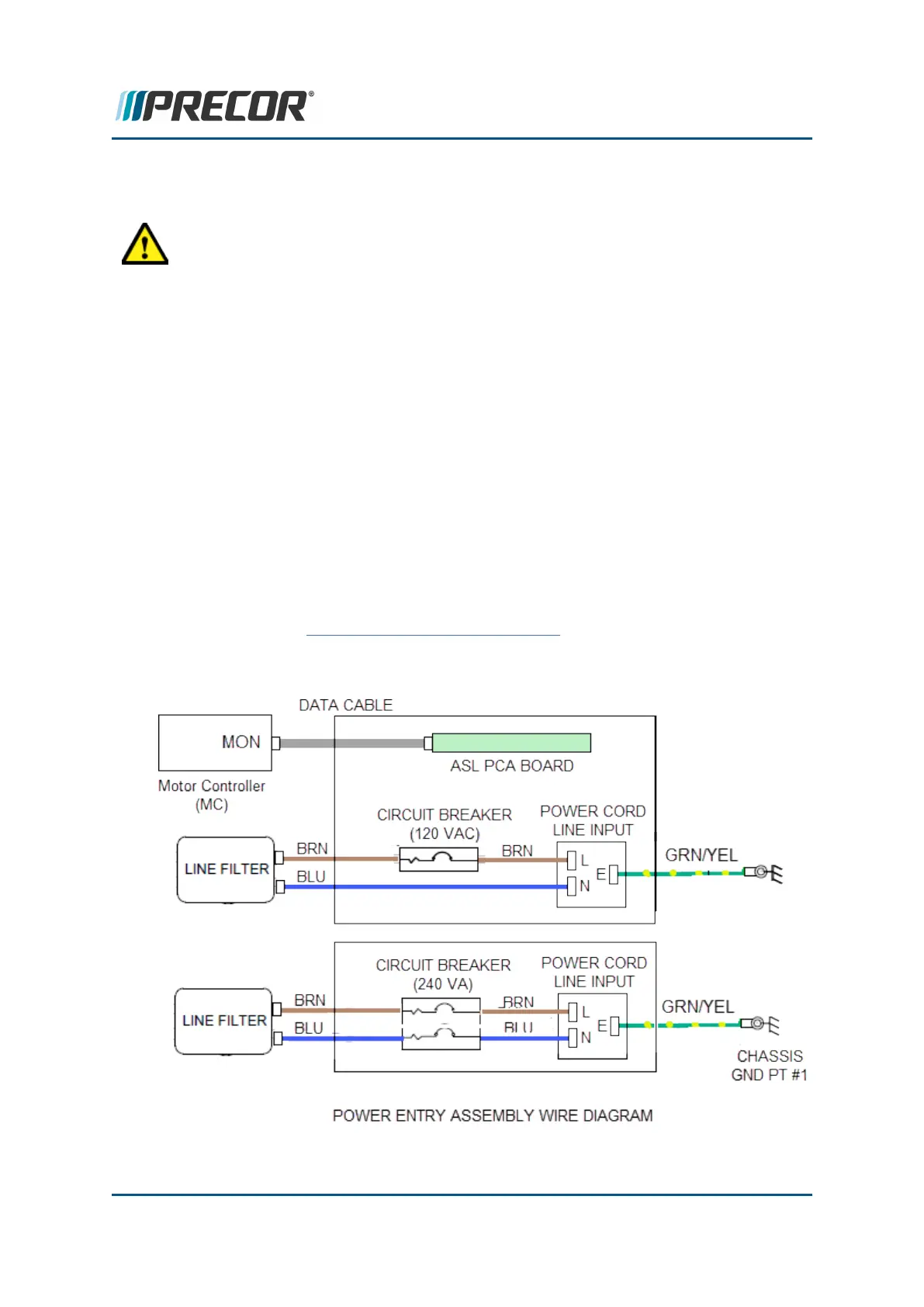